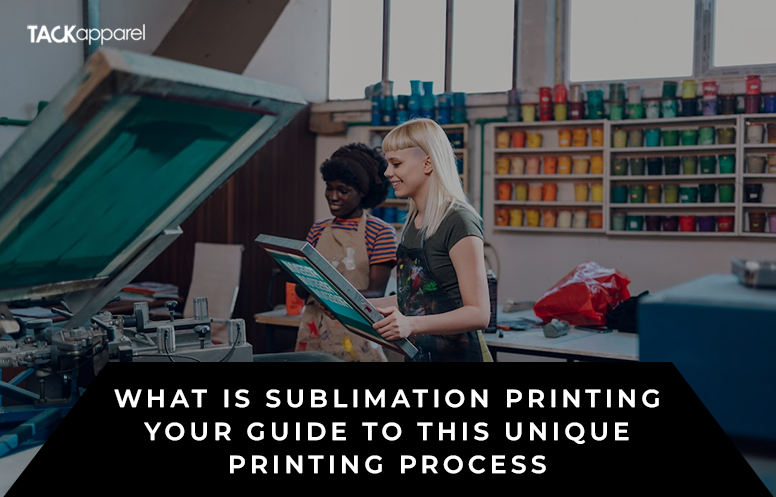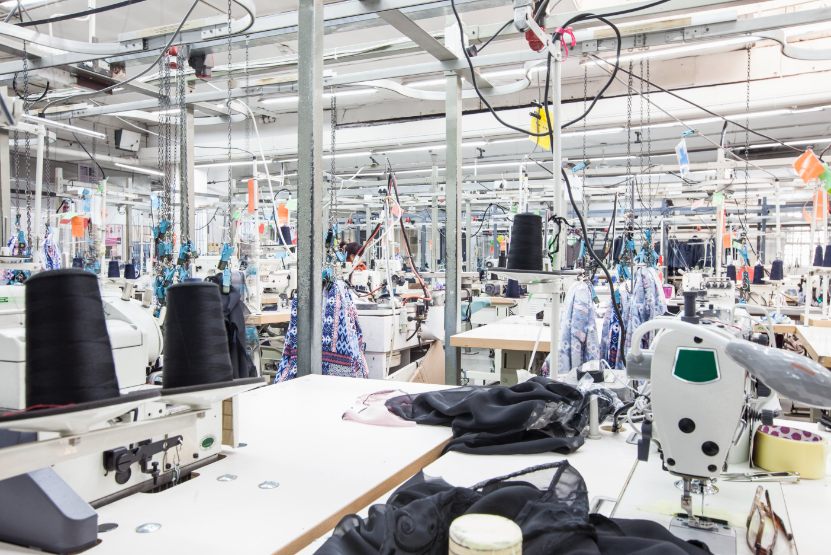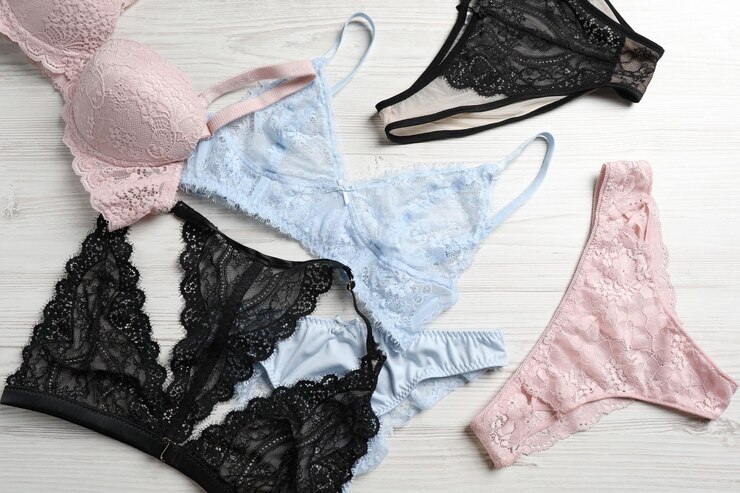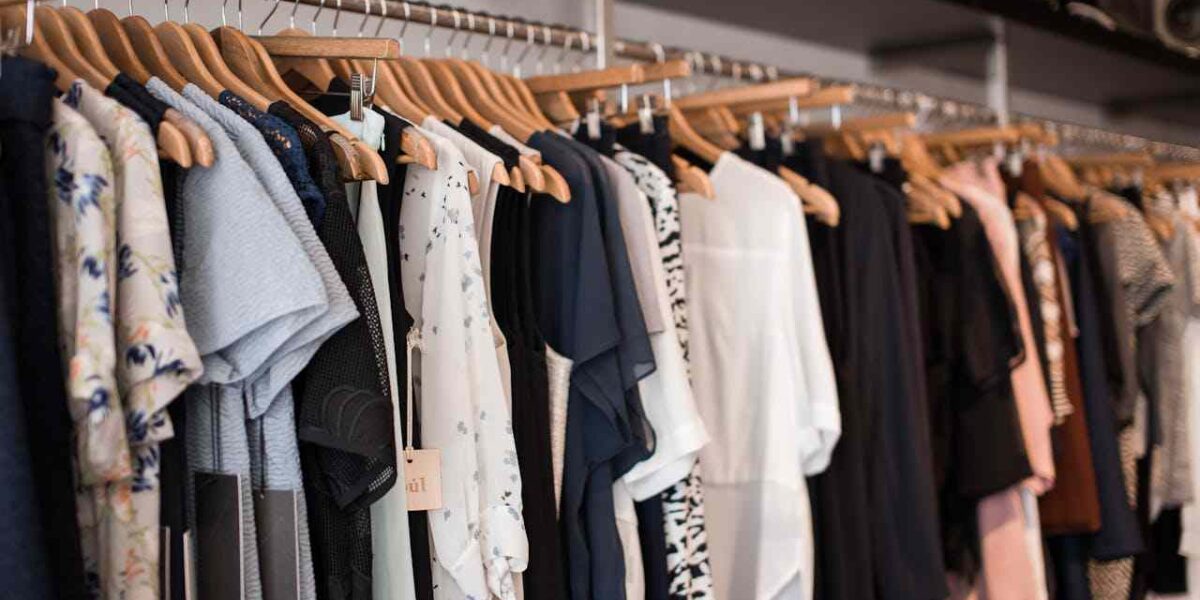You finally decided to start that side hustle selling printed merchandise but don’t know where to begin. Sublimation printing has caught your eye, but what is it and how does it work? All valid questions when starting a small business. This guide breaks down the basics of sublimation printing to help you determine if it’s the right technique for your creative venture. With insights into the process, required tools, ideal materials, costs, and tips for getting started, you’ll learn the key factors to evaluate when deciding if sublimation printing is the way to make your merch dreams (and profits) come true.
What Is Sublimation Printing?
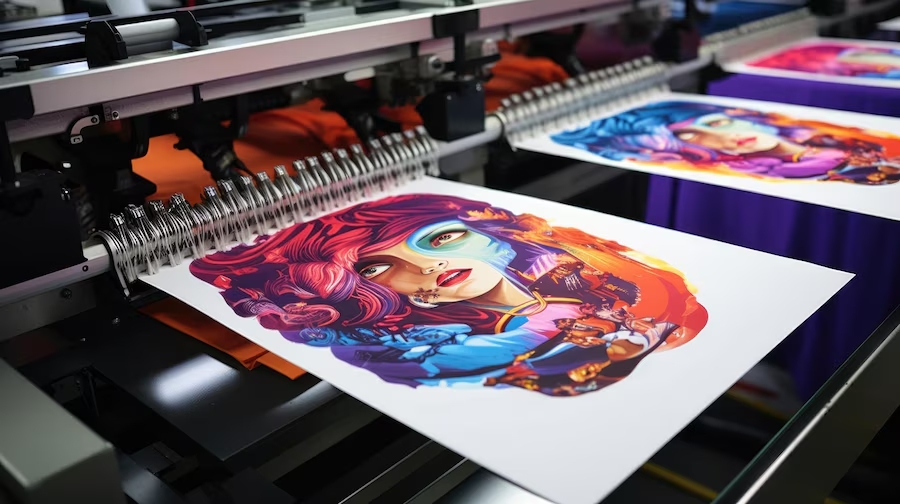
Sublimation printing is a process where colored dyes are infused into specially coated fabrics and materials. The inks become part of the fibers, resulting in vibrant, permanent prints that won’t fade or crack over time.
How Does Sublimation Printing Work?
Sublimation inks, specialized transfer paper, a heat press, a sublimation printer, and other necessities are needed for dye sublimation printing. To permanently fuse ink and surface material or cloth, heat is used.
Heat and pressure cause sublimation inks to turn into gas, which penetrates the substrate and creates an enduring image. It is not layered over the fabric; rather, it becomes a part of it, making the outcome vivid, high-quality, and much less likely to fade or break.
The sublimation printing process operates as follows:
- Using sublimation inks, a dye-sublimation printer prints your personalized design onto a unique transfer paper.
- The paper is then placed on a product (a mug, t-shirt, or whatever else) and heated using a heat press, which simultaneously applies a lot of pressure and heat.
- The heat causes the inks to turn into gas, which the material subsequently absorbs.
- Consequently, you receive an enduring, vivid print that merges with the product rather than adhering to it.
Why Choose Sublimation Printing?
Compared to standard printing methods, sublimation offers some key benefits:
- Vibrant, fade-resistant colors that last for years. The dyes infuse the material at a molecular level.
- Soft feel. Sublimation prints feel like part of the fabric, not a layer on top.
- Versatile applications. Sublimation works on everything from t-shirts and phone cases to mugs, tiles, and more.
- High image quality. Sublimation can produce photo-realistic prints with smooth color transitions.
If you want eye-catching, durable prints, sublimation is the way to go. The process may require an initial investment in equipment, but the results are well worth it.
The Benefits of Using Sublimation Printing
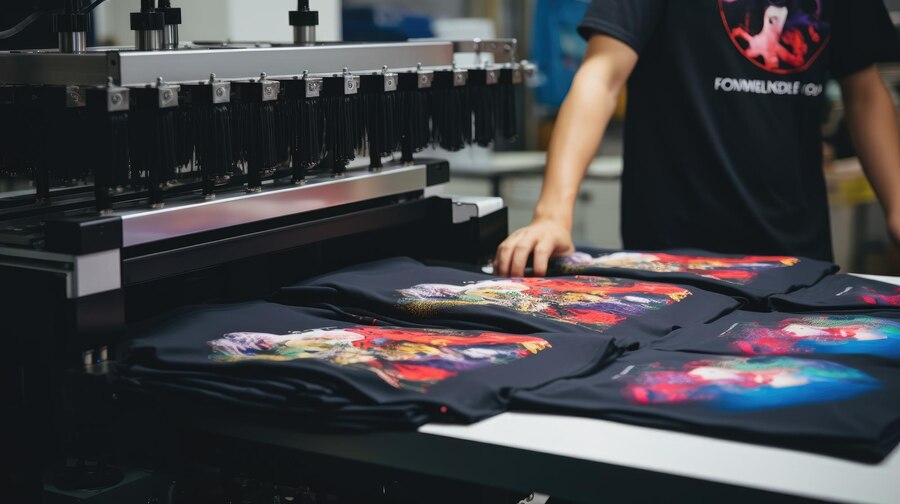
The process of sublimation printing allows patterns or photos to be imprinted on stiff materials like polyester fabrics. The large selection of products that are already ready for sublimation, the minimal initial expenditure, and the simplicity of learning make this method quite attractive.
There are just two easy steps in the sublimation process:
- Using an inkjet printer that you will only use for this method, print your design or photo. It needs to have ink and special sublimation paper.
- Apply heat with a heat press to transfer the design to a surface ready for sublimation.
Sublimation printing offers some key advantages over other printing methods. First, the colors produced are vibrant and realistic. The ink is infused into the fabric fibers to produce deep, rich tones that don’t fade over time. Images and designs have a softer, more natural look.
Second, the printed designs are durable and long-lasting. Because the ink chemically bonds to the substrate, the printing is highly resistant to damage from washing, sunlight, and abrasion. Designs that would crack or peel using other methods remain crisp and intact for years using sublimation printing.
Finally, sublimation printing allows for all-over printing that covers the entire surface of the product. With no white margins or edges showing, the designs appear more custom and high-end. All-over printing is ideal for products like phone cases, pillows, and other décor items.
For these reasons, sublimation printing is an attractive option for businesses looking to produce custom-printed products with vibrant, professional results and lasting customer satisfaction. While the upfront costs can be higher, the quality and durability provide long-term value.
Sublimation Printing Tips and Tricks
When it comes to sublimation printing, a few techniques can help you achieve better results. First, always pre-press your fabric before printing. This removes wrinkles and creases, allowing for better ink adhesion. You’ll get sharper, crisper prints.
You should also consider the fabric type. Polyester fabrics work best, as they can withstand the high heat needed for sublimation. Cotton fabrics won’t work at all. Rayon and nylon can work, but polyester is ideal.
For the most vibrant colors, use a sublimation ink that matches your polyester fabric type. Transfer paper also impacts color, so choose one designed for the fabric you’re using. The paper should be slightly larger than your print design.
Proper heat and timing are key. Follow the recommendations for your heat press to ensure the right temperature and pressure are applied for the correct amount of time. This allows the inks to fully transfer into the fabric. Too little time won’t transfer enough ink, while too much time can scorch the fabric.
With some practice, sublimation printing can produce gorgeous, durable results. Keep at it, learn from any mistakes, and you’ll be creating customized pieces in no time! Experiment with different color combinations, fabrics, and applications to make sublimation printing work for you.
What Is The Difference Between Sublimation Printing And Regular Printing?
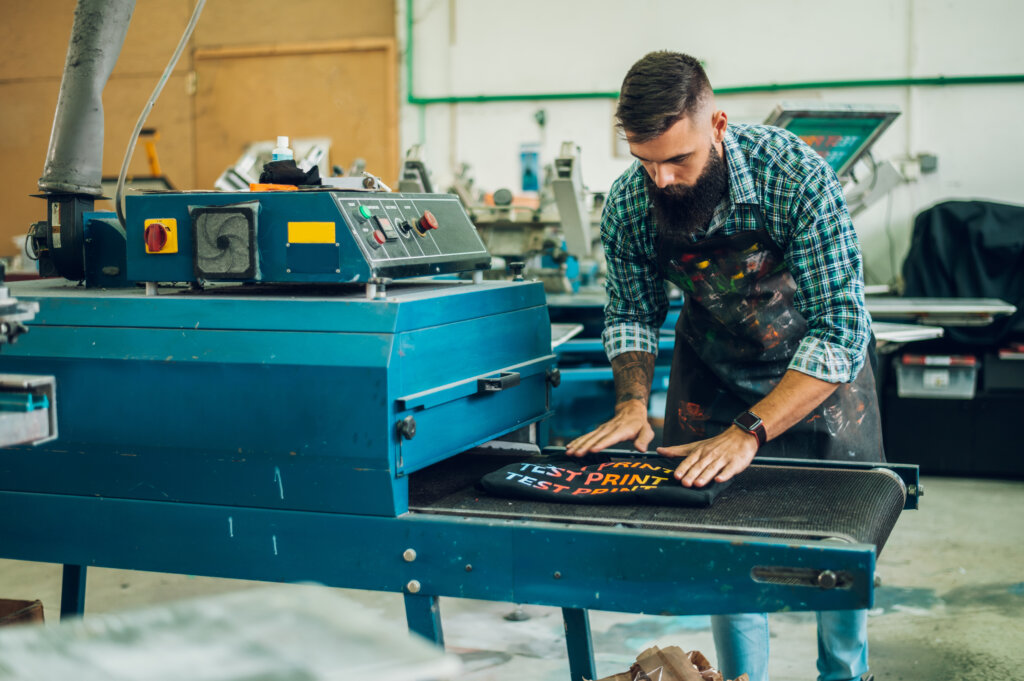
Unlike regular printing methods like digital embroidery and screen printing, which apply ink to the surface of materials, sublimation printing uses heat to transfer dye onto materials like polyester and polymer-coated substrates.
The key difference is that sublimation printing permanently bonds the dye to the material at a molecular level. Regular screen printing methods adhere ink to the surface, so the print can crack or fade over time. Sublimation prints become part of the material, so they last much longer and can withstand more wear and tear without showing signs of damage.
Another key difference is that sublimation printing can print full, vibrant colors, complex designs, and photographic images with high resolution. The dye permeates the material to create rich, saturated colors that won’t run or bleed. Regular printing often struggles to achieve the same color quality and detail, especially on non-porous materials.
If you want professional, durable prints with eye-popping colors, sublimation printing is the way to go. For basic signs, labels, or temporary uses, regular printing methods may suit your needs at a lower cost. But when quality and longevity matter, sublimation printing is the superior choice.
The Process of Sublimation Printing
Sublimation printing is a unique process where dye particles are transitioned from a solid to a gas and then back to a solid again. First, special sublimation inks are printed onto transfer paper using a standard inkjet printer. Then, heat and pressure are applied to the transfer paper, which causes the solid ink particles to turn into a gas and infuse into the fibers of the item being printed.
Sublimation printing uses heat to transfer dye onto materials like fabric, wood, and ceramics. The process starts with specially treated dyes called sublimation inks. These are applied to transfer paper using a printer. Then the transfer paper is placed on your material and heat-pressed. The heat causes a chemical reaction that turns the solid ink into a gas, allowing it to bond directly with the material. As the ink cools, it returns to a solid state, creating a permanent bond. This results in vibrant prints that won’t fade, crack, or peel over time.
Compared to other printing methods, sublimation printing offers some key benefits. It allows for customization on a wide range of products since the ink can bond to many surfaces. It’s also environmentally friendly since no harsh chemicals are required. However, sublimation does require an initial investment in special equipment like a heat press and printer. It also typically only works on polyester fabrics and coatings, limiting the materials you can print on.
As the gas cools, it returns to a solid, permanently dyeing the material. This results in vibrant prints that are extremely durable and long-lasting since the color has been incorporated into the item rather than just adhering to the surface. The most common items for sublimation printing include mugs, t-shirts, phone cases, mouse pads, and other accessories.
The key to quality sublimation printing is using a printer specifically designed for sublimation inks, high-temperature heat presses, and 100% polyester fabrics or coatings. When done properly with the right equipment, sublimation printing produces stunning, photorealistic prints that stand up to repeated washing and everyday use. While the initial costs for equipment can be higher than other printing methods, sublimation printing is an extremely versatile and profitable process for businesses.
Overall, sublimation printing produces high-quality, long-lasting custom prints for promotional products, sportswear, decor, and more. With some basic equipment and knowledge, you’ll be creating eye-catching sublimated designs in no time.
Using Sublimation Printing On Different Products
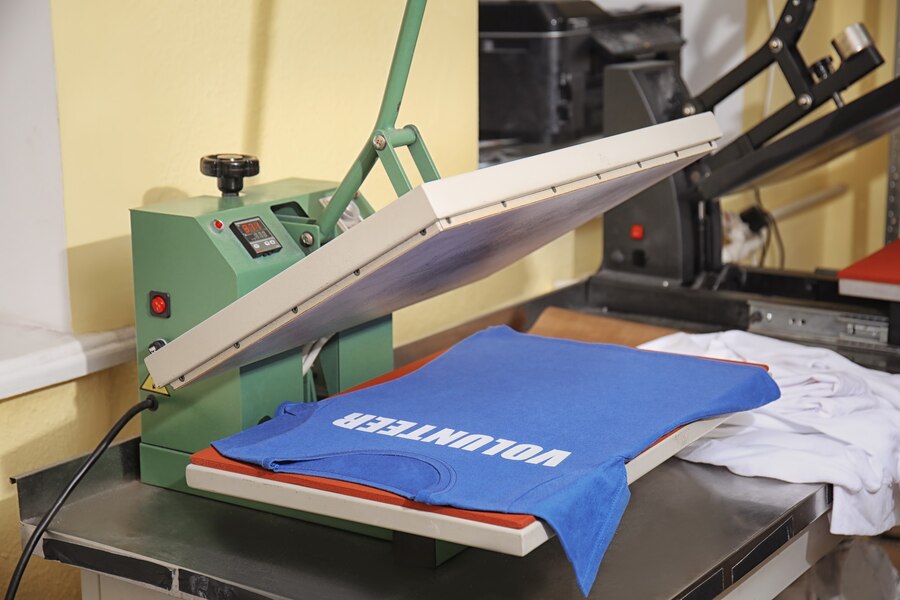
You can create tons of different products using sublimation printing. From personalized phone cases to custom coffee mugs, some of the most common sublimation printing examples are:
T-shirts and Apparel
Sublimation printing works great for imprinting designs onto t-shirts, sweatshirts, polo shirts, and other garments. The ink is bonded directly into the fibers of the fabric, so your designs will last wash after wash without cracking or peeling.
Mugs and Tumblers
Custom mugs are always a favorite. Sublimation allows you to wrap full-color designs completely around coffee mugs, water bottles, tumblers, and other drinkware. Your creations make perfect personalized gifts or promotional items.
Phone Cases
People love customizing their tech accessories, and sublimation-printed phone cases are no exception. You can imprint vibrant patterns, photos, or text onto phone cases to create one-of-a-kind items for any make or model of phone.
Mouse Pads and Coasters
Liven up desktops by printing custom mouse pads, coasters, and other desk accessories. Sublimation inks bond permanently to the surface, resisting scratches, stains, and fading for a durable product anyone would appreciate.
Other Promotional Items
Custom prints can also be made with sublimation printing on a variety of materials, including ceramic tiles, metal, wood, and many more. You can probably use sublimation printing to make a high-quality, personalized version of any item you can think of to promote your brand or event. There’s always a need for new substrates that can be imprinted using sublimation inks.
Concluding The Power of Sublimation Printing!
Whether you want to create eye-catching promotional goods, adorn your home, or customize garments, sublimation printing can turn your creative ideas into a bright reality. You’ll therefore have a greater understanding of the art and science involved the next time you’re amazed by a vivid bespoke mug or see someone wearing a personalized sublimated T-shirt.
One vibrant print at a time, sublimation printing uses technology and artistry to create works of art that enhance our lives. It is a monument to human ingenuity and creativity. For all of your printer purchases and needs,
You can find sublimation printing services at Tack Apparel for any occasion. We provide a large selection of high-quality printers along with all-inclusive fabric printing solutions to t-shirt and hoodie manufacturers.

